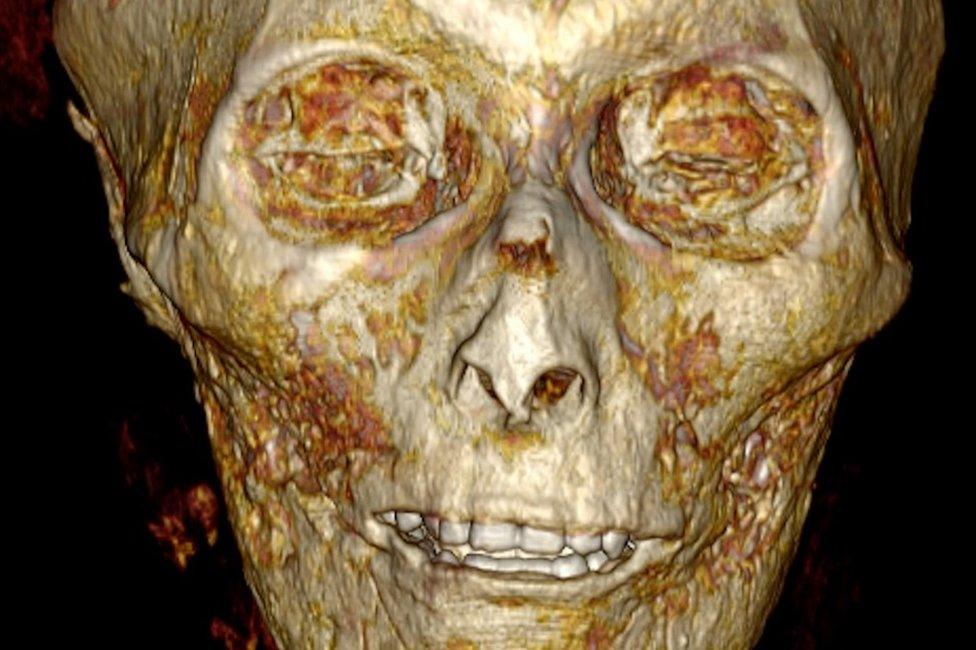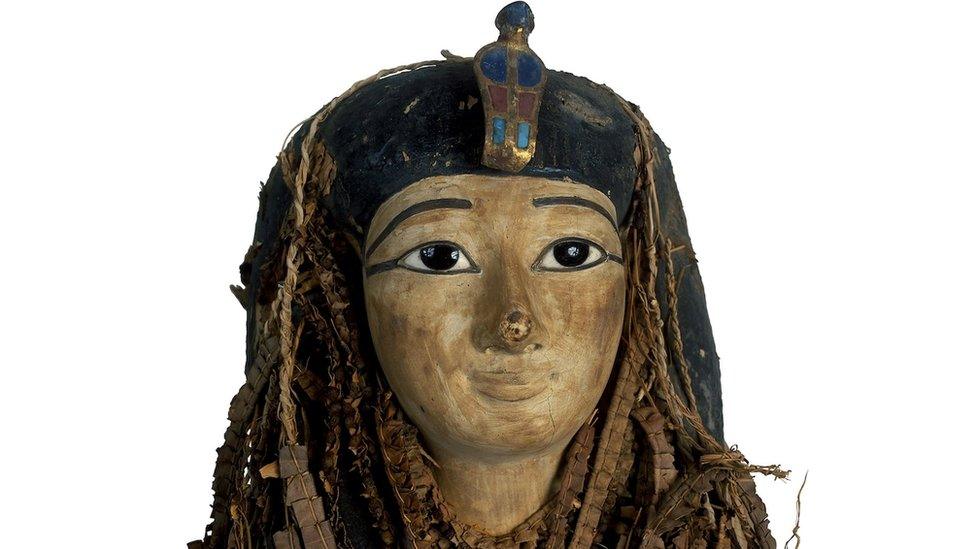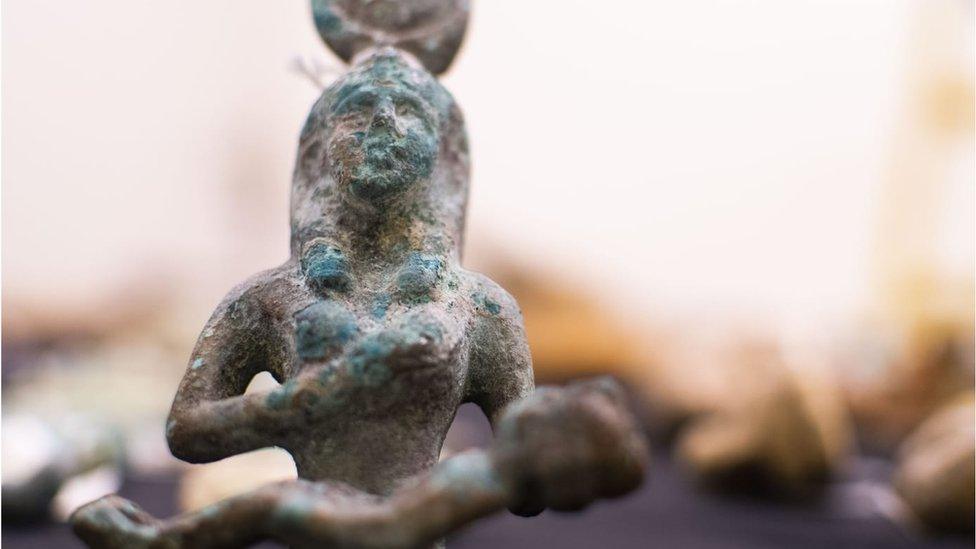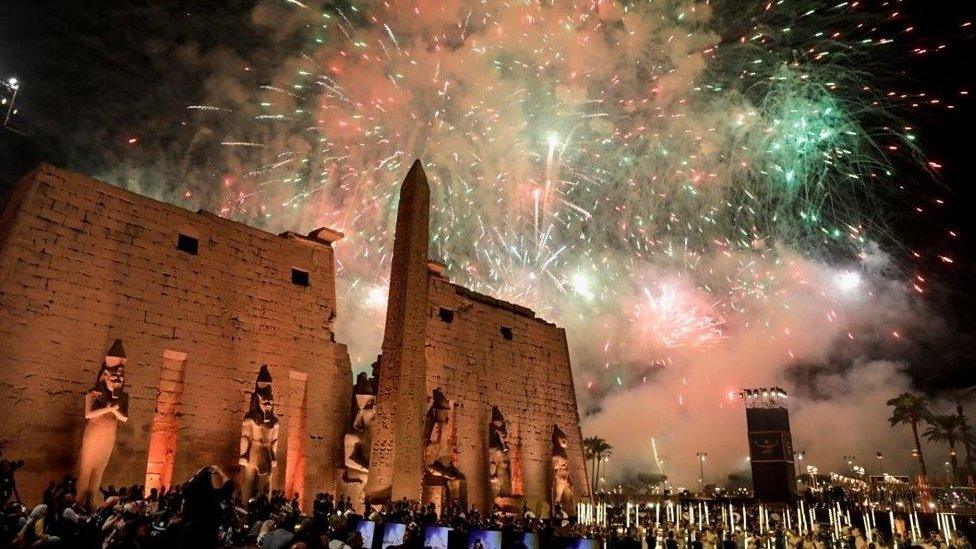Egyptian pharaoh's mummy digitally unwrapped for first time
- Published

A CT scan reveals Amenhotep I's skull
The mummified body of an ancient Egyptian pharaoh has been studied for the first time in millennia after being digitally "unwrapped".
The mummy of Amenhotep I, who ruled from 1525 to 1504 BC, was found at a site in Deir el-Bahari 140 years ago.
But archaeologists have refrained from opening it in order to preserve the exquisite face mask and bandages.
Computed tomography (CT) scans have now revealed previously unknown information about the pharaoh and his burial.
"We got to see the face of the king that has been wrapped for more than 3,000 years," Dr Sahar Saleem, professor of radiology at Cairo University's Faculty of Medicine and lead author of the study published in the journal Frontiers in Medicine, external, told the BBC.

Dr Saleem says the scans of the body did not show any wounds or disfigurement due to disease
She said the first thing that had struck her was how Amenhotep I's facial features resembled those of his father Ahmose I, the first pharaoh of ancient Egypt's 18th Dynasty, with a narrow chin, a small narrow nose, curly hair, and mildly protruding upper teeth.
The researchers also established that Amenhotep I was approximately 169cm (5ft 6in) tall and that he was about 35 years old when he died.
Dr Saleem said the scans showed he was in very good physical condition and in good health at the time of his death, with no signs of any wounds or disfigurement due to disease. That suggested he died as a result of an infection or a virus.
The researchers were able to gain insights about the mummification and burial of Amenhotep I, including that he was the first pharaoh to have his forearms folded across his chest and that, unusually, his brain was not removed.
They also concluded that his mummy was "lovingly repaired" by priests of the 21st Dynasty, which ruled about four centuries after this death.

Amenhotep I's mummy was twice reburied by priests of the 21st Dynasty
The scans showed that the mummy suffered from multiple post-mortem injuries that were likely to have been inflicted by grave robbers.
They also showed that the priests fixed the detached head and neck to the body with a resin-treated linen band, covered a defect in the abdominal wall with a band and placed two amulets beneath, and wrapped the detached left arm to the body.
Dr Saleem said the 30 amulets and "unique" golden girdle with gold beads that Amenhotep I was wearing disproved theories that the priests might have removed his jewellery for use by later pharaohs.
The mummy of Amenhotep I was reburied by the priests in the Deir el-Bahari Royal Cache, a complex of tombs and temples near Luxor, to keep them safe.

You may also be interested in:
Watch as 18 kings and four queens were carefully moved to a new museum in Cairo in a dazzling parade (April 2021 report)
Related topics
- Published4 April 2021

- Published9 December 2021

- Published25 November 2021
